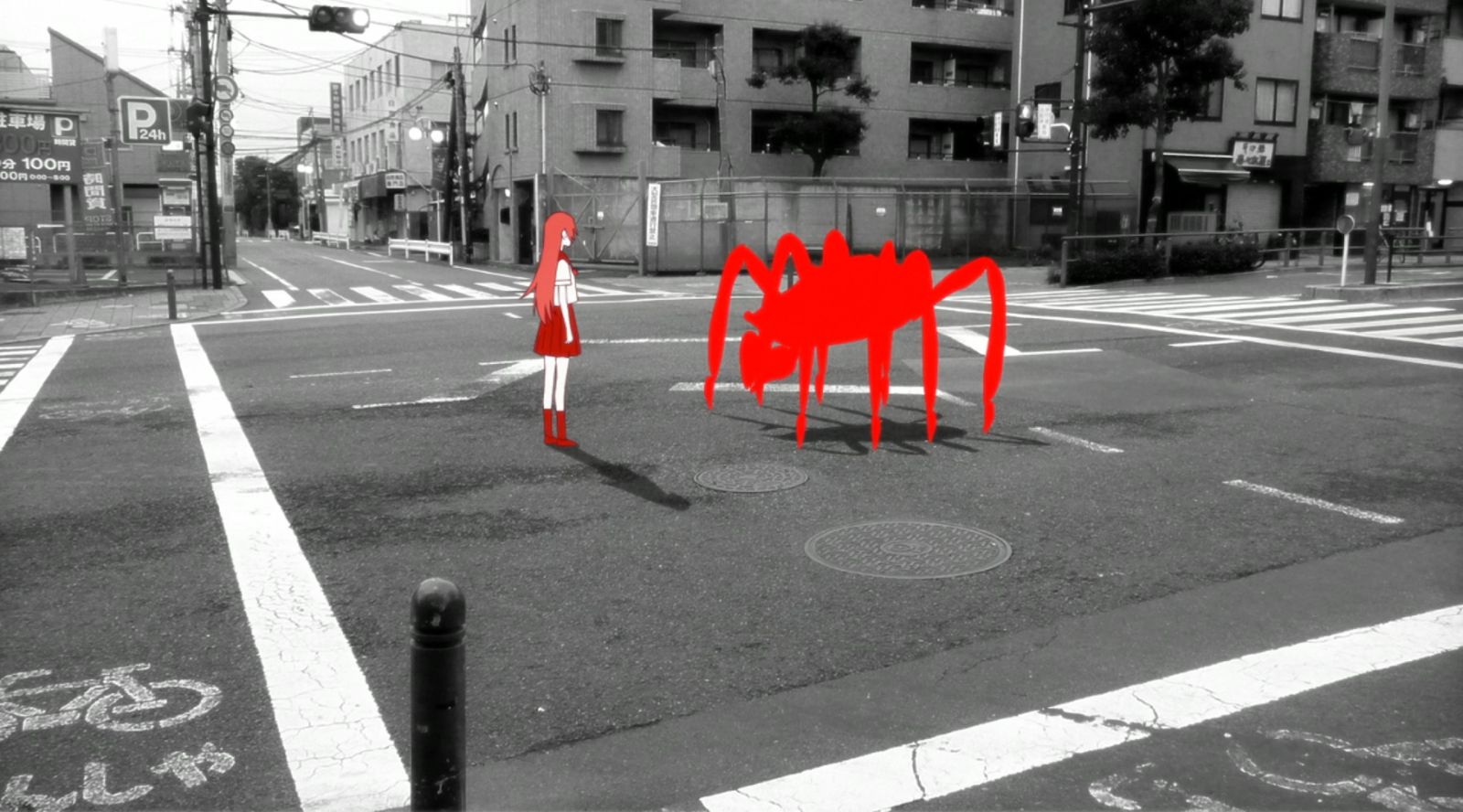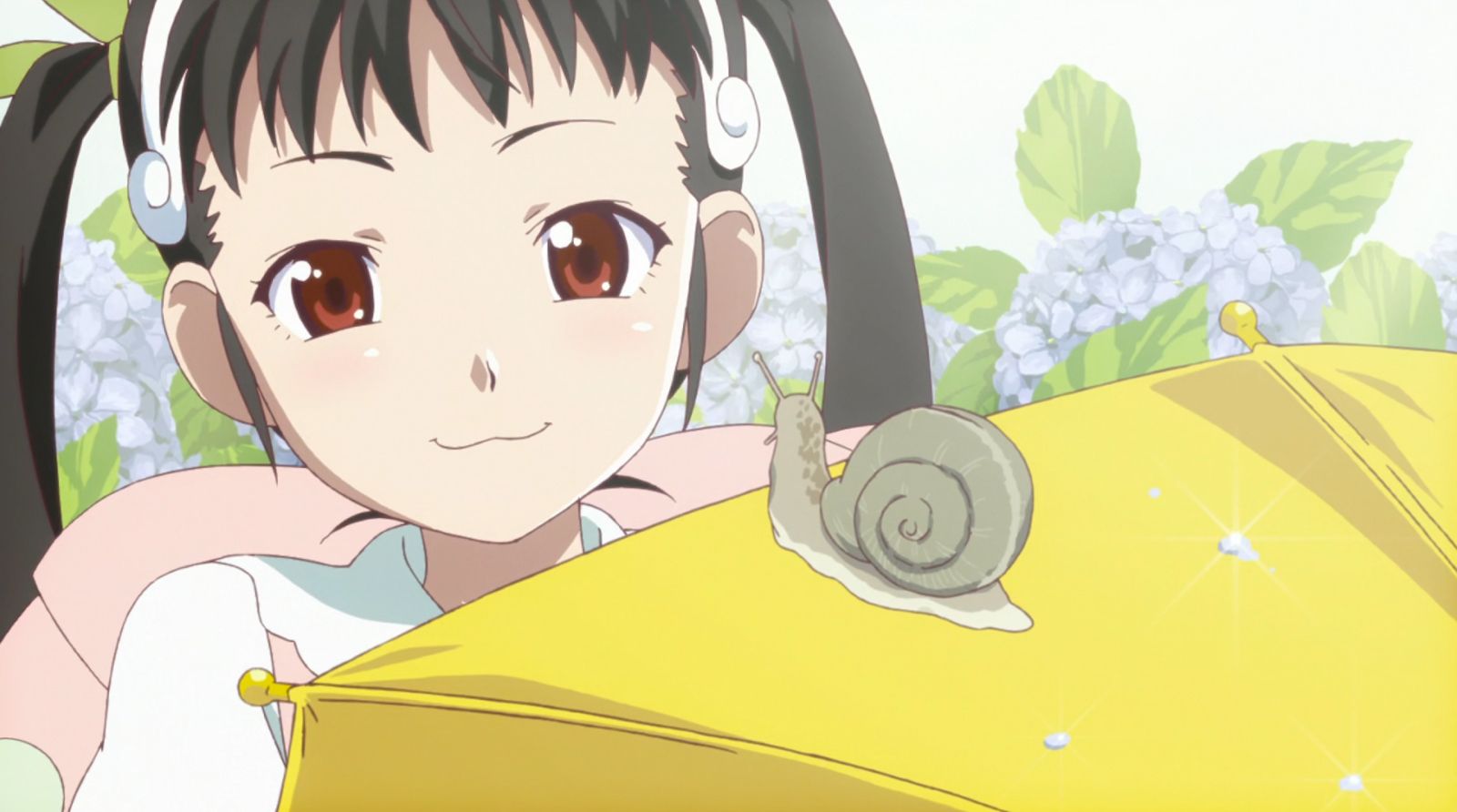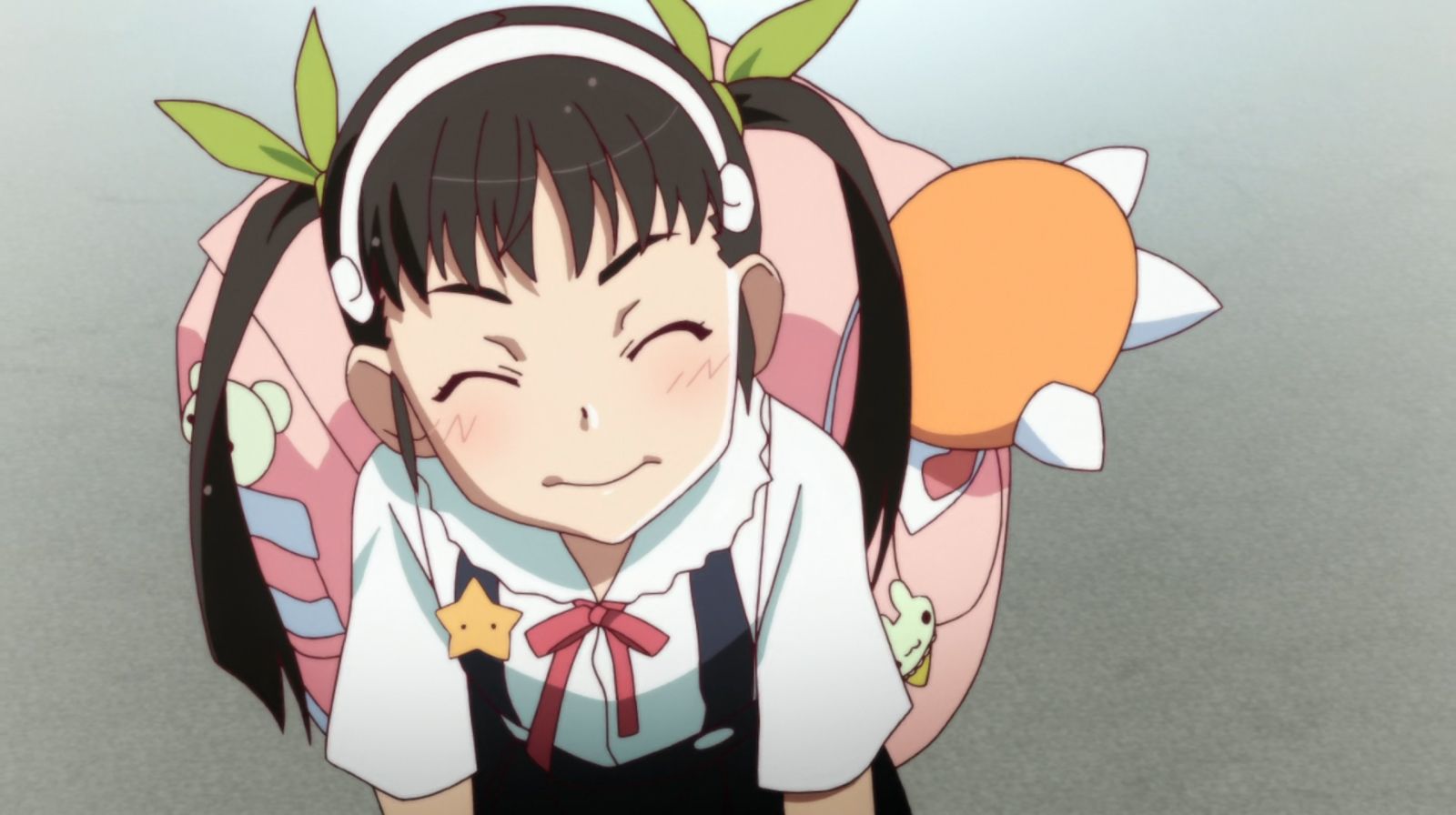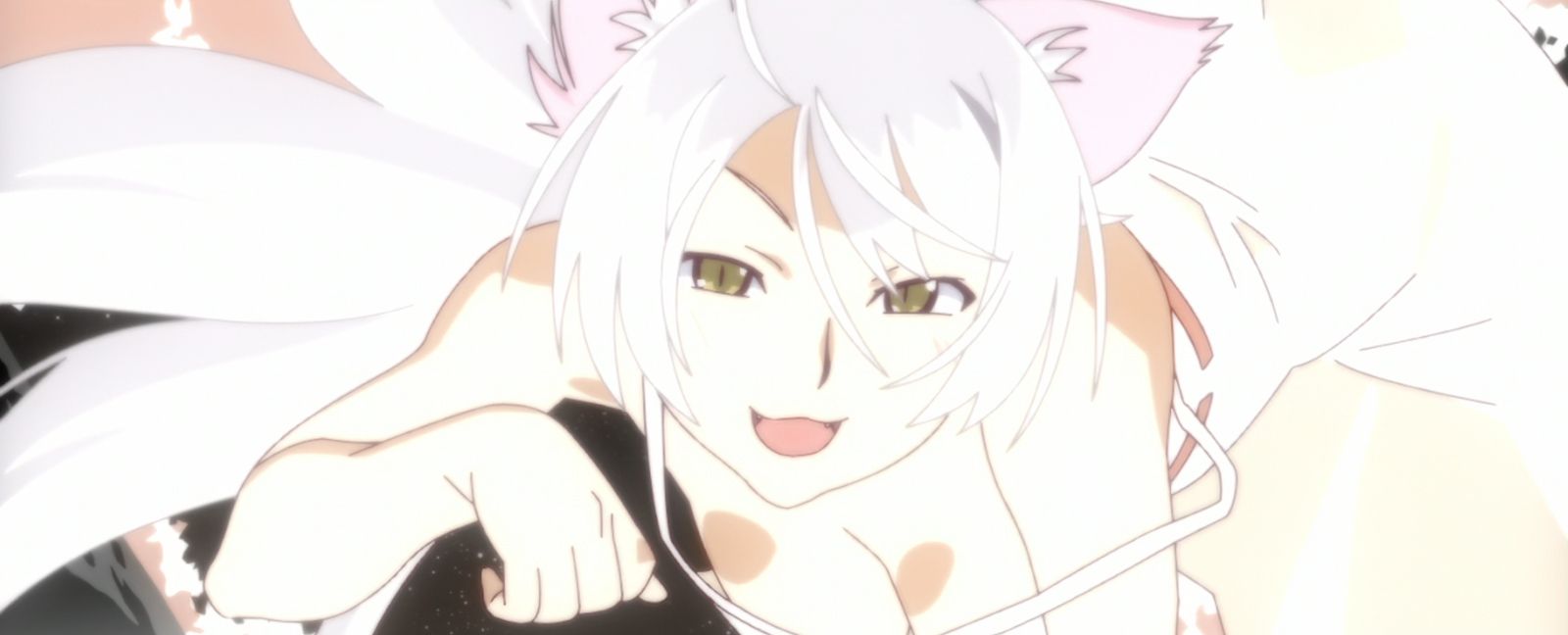Written by TURBOPOTATO
The writing of this article was undertaken as an independent project for the SAS Catalyst program. Read more.
Imagine KonoSuba without its eccentric cast or Shingeki no Kyojin without its vast variety of characters. The comedy and story, respectively, can’t be conveyed without them. As a character’s personality and motives often act as a driving force in storytelling, characterization is a crucial factor for a successful anime. No matter how well the plot is written, or how impactful the animation and soundtrack are, if the characters are flat and bland, we no longer feel the empathy to care about their actions or emotions. The Monogatari Series executes this excellently by having characters’ identities extend beyond the characters themselves, driving the story in the form of aberrations that allow for complex growth throughout the series. This notion is especially clear in Bakemonogatari, the first installation of the series, when we are first introduced to a large portion of the main cast.
Hitagi Crab

At just two episodes long, Hitagi Senjougahara’s concise yet compelling story arc characterizes her thoroughly through the aberration which afflicts her: the Omoshi Kani (Crab of Weight). The choice of a crab as her aberration is oddly fitting since Senjougahara’s birthday is July 7th, which corresponds to the zodiac Cancer. To top it off, it's the same day as Tanabata in Japan, also known as the Star Festival. Looking at the horoscope for Cancer, the traits match those of Senjougahara with great precision. Horoscopes are somewhat subjective and may vary across sources, but these resemblances suggest that NisiOisiN may have taken some inspiration from this to build Senjougahara’s character.
This is especially true for the traits relating to their challenges and dislikes, as most of the arc relates to her personal trauma. The greatest challenge for Cancers is their tendency to turn their emotions inwards by shutting out the outside world as a source of help. This fits Senjougahara as she, after being scammed various times, refuses to receive help from Araragi at first. When Araragi becomes aware of Senjougahara’s issue, she attempts to put distance between them and attacks him with her pincer, or more literally, with her stapler. Despite this act, Araragi steps in to provide a helping hand, allowing her to find a way to release and overcome the emotions suppressed within her.

In addition, the main dislikes of Cancers (strangers, criticism of mother, and the exposure of personal life) are also seen in Senjougahara's story arc. Her dislike of strangers is explicitly revealed as she explains how she was almost raped by a stranger from her mother’s cult. Regarding criticism of mother, this is less explicit but is still evident in her love towards her. Even though her mother’s involvement with the cult led to her traumatic experience, she never once says she hates her mother. In fact, after facing her burden and gaining back her weight, she refers to her memories with her family as ‘nostalgic’, signifying her love for her family and her mother. Finally, the dislike of revealing personal life is most clearly seen in her initial rejection of Araragi’s interference.
Despite all the similarities related to hardship, the final resemblance of a typical Cancer is regarding love. Cancers are often proactive when it comes to romance and are straight to the point—this especially fits Senjougahara. Even though many see her as a tsundere she is always the one making moves in her relationship with Araragi.
Through the strategic use of the aberration and the combination of the traits of Cancer with the generic tsundere trope, NisiOisiN creates a complex and lovable character with depth and potential for development.
Mayoi Mai Mai

Being an elementary school girl, what Mayoi Hachikuji wants is simple: she wants to see her mother. Contrasting with Senjougahara’s deep backstory introduced in the previous arc, Hachikuji’s arc includes an abundance of jokes, and the connections relating to the snail are much more simple and clear, giving off a much lighter feel—fitting for an arc about a young girl. The connection between the story and the snail is explained explicitly by Oshino when he calls Araragi at the park. He explains that the Japanese word for snail (蝸牛) can be described as a ‘Lost Cow,’ suitable for Hachikuji, who is a spirit that leads her victims astray. The word for snail is composed by replacing the water radical in the character for swirl (渦) with the character for insect (虫), joined with the character for cow (牛).

Another connection to the snail is Hachikuji’s appearance. Her pink, oversized backpack bears a resemblance to a snail’s shell; her twin tails look like a pair of snail’s eyes while her green hair ties are similar to the lower tentacles near a snail’s mouth. More interestingly, though not present in the anime, is what is in her bag. A line from the light novel describes her filling her backpack with old memories to show her mother. Just as the shell of a snail provides protection for its vital organs, Hachikuji’s backpack is filled with her most precious memories which she wants to protect.
Suruga Monkey

Suruga Kanbaru’s arc is an interesting one in that it references a western text, namely The Monkey’s Paw by W.W. Jacobs. The short story revolves around the White family who are introduced to the Monkey’s Paw through their friend Morris. He explains that the paw grants three wishes but warns the family about the severe consequences which would follow for tampering with fate. Not heeding the warning, the story follows the tragic events the family suffers from. Similarly, the aberration that Kanbaru encounters takes the form of a monkey’s paw and grants wishes with harsh consequences. This resemblance causes Kanbaru and Araragi to conclude that Kanbaru’s left arm was possessed by a Monkey’s Paw.
However, Oshino reveals that the aberration Kanbaru encountered is actually not a Monkey’s Paw, but a Rainy Devil. Unlike a Monkey’s Paw, the Rainy Devil attached to its owner and grew as it devoured the owner’s soul for each wish they made. Most importantly though, the Rainy Devil grants the subconscious wishes of its bearer in the exact way they were asked for, unlike the original Monkey’s Paw that granted wishes in terrible ways. This means that Kanbaru actually sought the terrible wishes that her aberration granted. In fourth grade, before the sports festival, Kanbaru claims to have wished to be able to run faster, but instead her classmates who were running a race with her disappeared. This was not because her wish was granted in a way she didn’t intend, but because she subconsciously wanted the classmates who bullied her to disappear. As Oshino describes: “It’s not a Monkey’s Paw—it’s a demon’s hand. Of course, it’ll grant you any wish. After all, it’s a trade for your soul.” This twist brings a dark turn not only to the story, but also to Kanbaru as a character. She suddenly turns from a lively bright girl with a troubled heart to a dark complex character, a twist that surprises both Japanese and western audiences.
Nadeko Snake

Nadeko Sengoku’s arc is another one which differs from the usual pattern followed by previous arcs. The past three arcs introduced a character along with a problem caused by an aberration, which Araragi would solve through the arc. However, in Nadeko Snake, despite being the character of interest of the well-known Ren’ai Circulation arc, Sengoku is not the character being developed throughout the arc. Rather, Araragi’s growth is the focus throughout the arc as he learns that he can’t save everyone. When he tries to save Sengoku’s classmate who had cursed her with the Jagirinawa, he is ultimately stopped by Kanbaru who scolds him for forgetting who he really needs to save.
Furthermore, Nadeko’s story seems unresolved with loose ends remaining. Who cast the second Jagirinawa on her? What happened to the boy to whom the Jagirinawa returned to? How has the relationship between Sengoku and Araragi’s sisters changed since their childhood? Up until this point, all the aberrations seem to have great thought put into them save for the Jagirinawa. Oshino describes it as an aberration which is used to curse another individual, Sengoku being the victim in this case. What is peculiar about this is that this is nothing original; curses relating to snakes are fairly common across different cultures and various literature, the serpent in the story of Adam and Eve and Nagini from the Harry Potter series being two of many examples. This makes the Jagirinawa the weakest aberration in regards to characterization, but the underlying commonality of the snake serves its purpose. The Jagirinawa is used to shift the focus away from Sengoku to instead develop Araragi as a character before revealing the story hidden by the snake in future arcs. This sets up Sengoku as a mysterious character who we as the audience and Araragi do not know much about, leaving room for development in the arcs to come. Is she really a cute kouhai, or is she a sly snake hiding her darker side through an act?
Tsubasa Cat

Despite being introduced in the first episode, even before Senjougahara, Tsubasa Hanekawa is never in the spotlight in the preceding arcs. She seems like the perfect student who has her life together and knows everything, or as she would say, “I don’t know everything. I just know what I know.” Contrary to this, however, it is revealed in this arc that she is an adopted child stressed by family problems: her adoptive parents don’t love her, so she wears the facade of the perfect child to avoid quarrels with them. The aberration which possesses her is the Sawarineko (Afflicting Cat): a silver white cat which attacks people to relieve its owner of their stress. This portrayal of the Afflicting Cat perfectly fits Hanekawa as it is a manifestation of her inner thoughts and wishes. As Araragi points out, it seems ironic for the Afflicting Cat to be white even though it is a manifestation of Hanekawa’s darker inner thoughts (“Black Hanekawa”). Nonetheless, it makes perfect sense.

Hanekawa always puts up a facade, pretending to be a perfect student and a lovable child, but her inner thoughts about her adoptive parents are not at all aligned with her act. This discrepancy between her outlook and inner self is portrayed in the inherent traits of her aberration. Having been adopted by a family which doesn’t give her the love she deserves, the unconditional love cats get from their owners is something she might have yearned for. In addition, the free nature of cats, doing whatever they please whether it be sleeping, eating or annoying their owners, is also consistent with her wishes as she tells Araragi that she isn’t applying to college, but instead is planning to travel around the world upon graduating high school.
Conclusion
Throughout Bakemonogatari and the rest of the Monogatari Series, the aberrations play a major role not only in the story, but also as a device for characterization beyond the characters themselves. The complexity of the characters, unmatched by most other anime, is undoubtedly the greatest strength of the series. Through the dual use of aberrations as a plot and characterization device, NisiOisiN entrances us with an introduction to a compelling story driven by captivating characters. As such, Bakemonogatari serves as the important starting point for this series which has remained popular throughout its broadcast spanning a decade thus far and is sure to continue.




